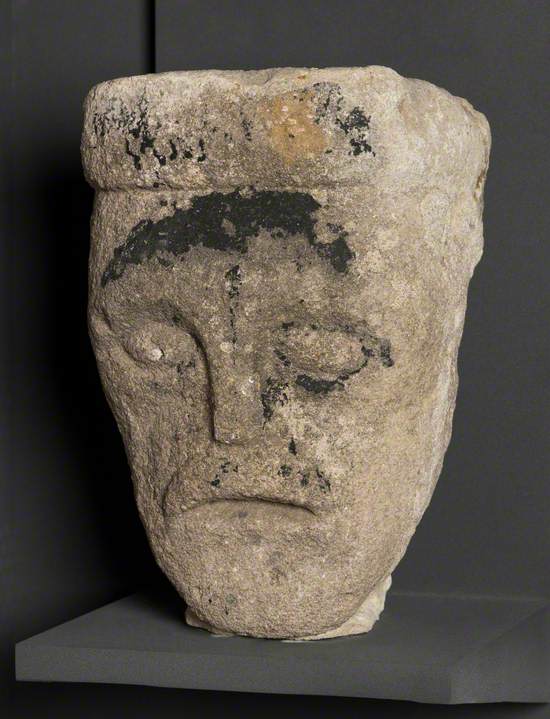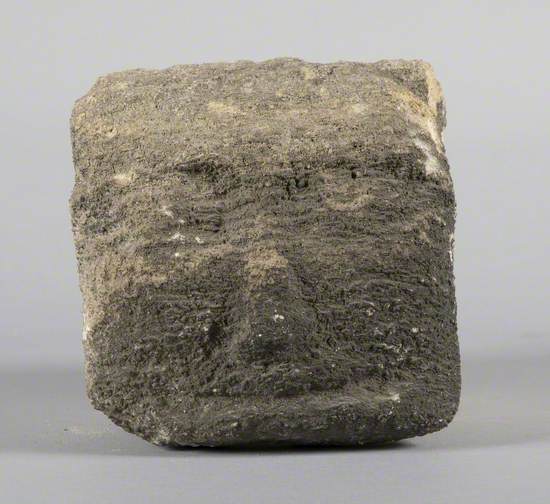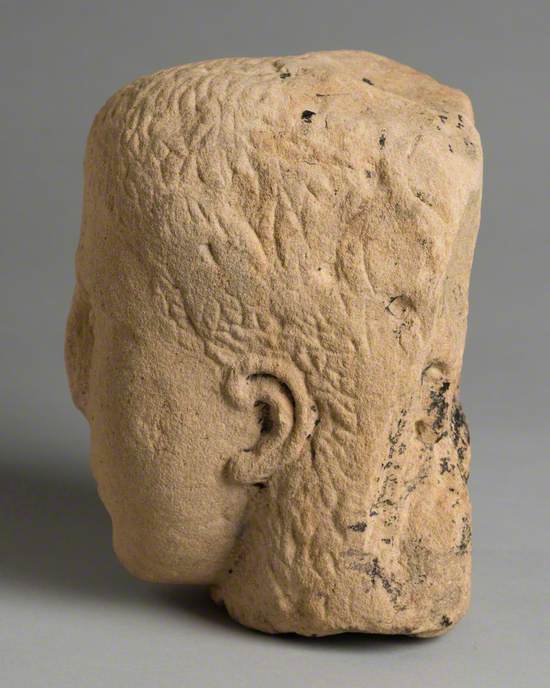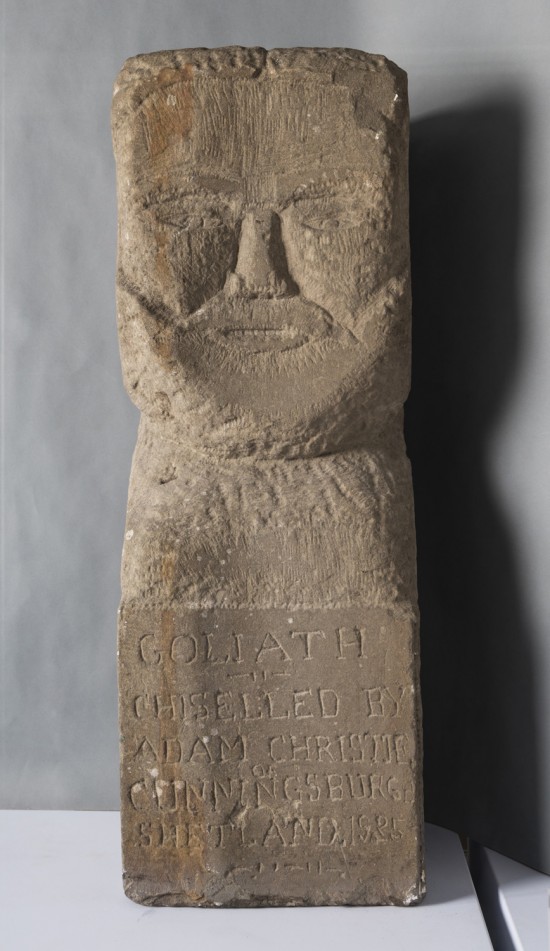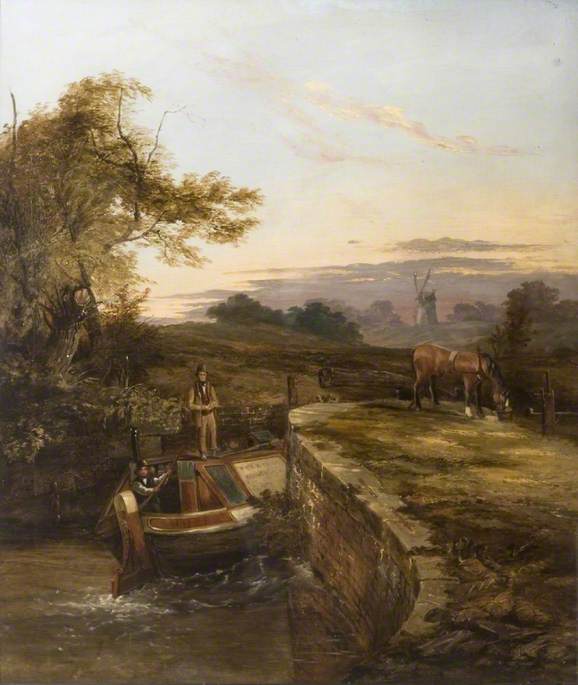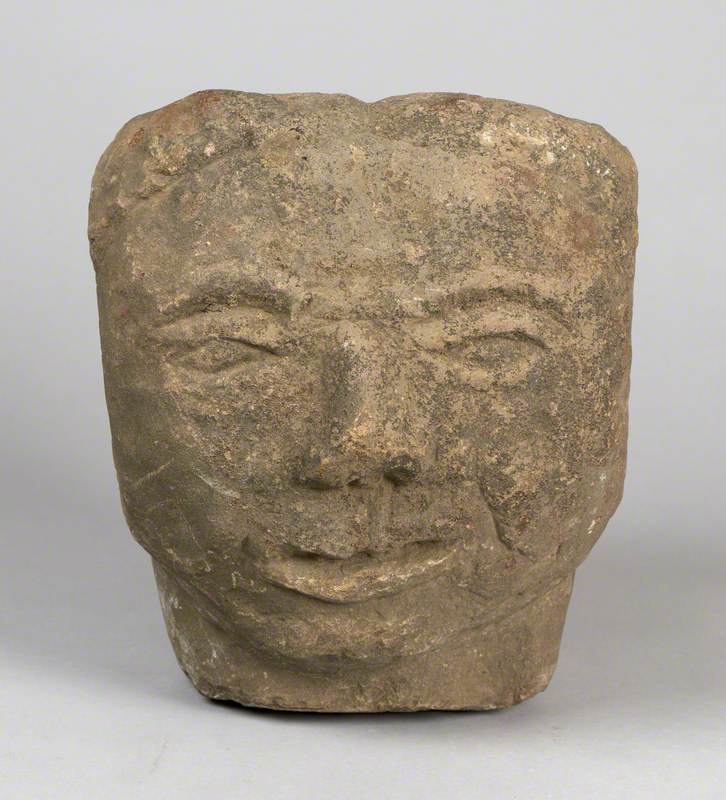Celtic heads have been found all over northern Europe and are part of a continuous sculptural tradition dating back to the Iron Age. They may appear to be crudely carved and lacking in sophistication but they have a potency in their simple, naive design.
These stone carved heads often have stylistic connections to Celtic art such as big moustaches and prominent leaf-shaped eyes. However, they’re difficult to accurately date as this type of folk sculpture didn’t really change much over the centuries. They could be Romano-British or Medieval or made in the 1970s. For me, this adds to their enigmatic charm.
It’s thought that the tradition may have links to the Ancient Britons’ belief that the head was the centre of the soul and a link to the sacred world of spirits. Warriors were said to attach the severed heads of their enemies to their horses’ necks to ward against evil.
They’ve often been found near bodies of water, springs and wells; places believed to be spiritually significant to ancient people. They might have been offerings, submerged in water as part of a ritual sacrifice. The practice may have influenced the gargoyles we see on churches where they’re used as water spouts.
unknown artist
Limestone
H 17.3 x W 16.8 x D 36 cm
Ancient House, Museum of Thetford Life
Many of the heads have an other-worldy, uncanny quality that is still recognisable to our modern eyes. Two fascinating sculptures, the Hexham Heads, gained notoriety in the 1970s when they were claimed to be cursed and linked to a series of paranormal events. Their creepy story involves poltergeist activity and werewolf apparitions before the heads mysteriously disappeared along with their then owner.
unknown artist
Sandstone
H 17 x W 12 x D 14 cm
Craven Museum & Gallery
Whilst the reasons for making them have undoubtedly changed, the style and form remained fairly constant up to the modern period. These uncomplicated sculptures have a timeless and familiar quality.
unknown artist
Stone
H 25 x W 15 x D 14 cm
Craven Museum & Gallery
Adam Christie (1868–1950) was a sculptor working in the north east of Scotland whose work echoes the simple forms and conveys a complex subconscious meaning. Whilst not being a maker of 'Celtic Heads' his work shows a continuity with this deep-rooted tradition and evokes the same psychological power.
Adam Christie (1868–1950)
Stone
H 89.5 x W 31 x D 31 cm
Shetland Museum and Archives (Shetland Amenity Trust)
